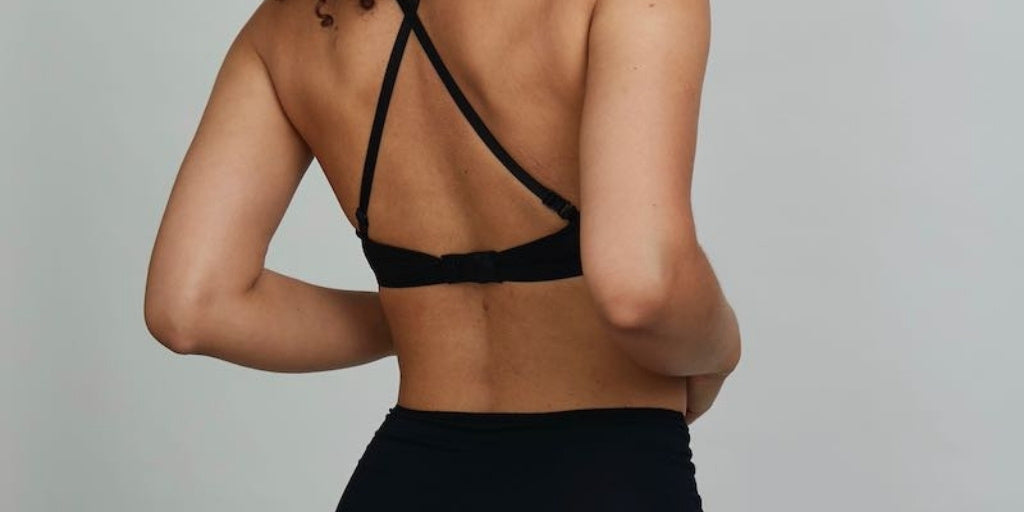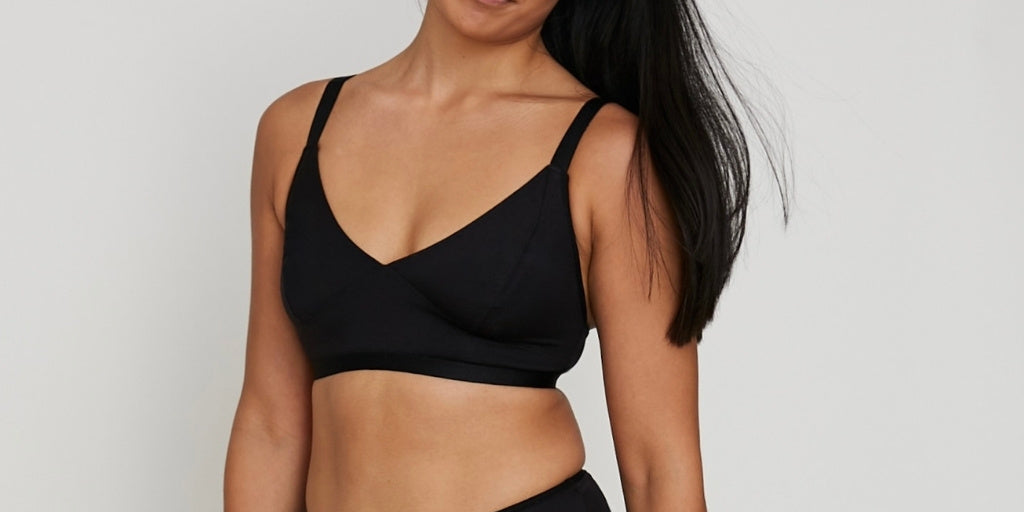As the tide toward sustainability and a planet-friendly ethos gains momentum, a positive transition to conscious consumerism is underway. Brands, both established and emerging, are wholeheartedly adopting sustainable ethics and embracing slow fashion.
While this is good news, unfortunately not all brands claiming sustainability are being honest and transparent. The move toward a more conscious approach to fashion is, of course, wonderful but with so many disingenuous brands falsely making eco-friendly claims, it’s difficult to know who you can trust.
So-called greenwashing has become a popular marketing gimmick that allows a company to present itself as environmentally friendly, or ‘green’, when in fact, it is not.
In this article we take a closer look at the rise of greenwashing, why brands are doing it, and how you, as a conscious consumer, can avoid it.
Just what is greenwashing?

Coined in 1986 by American environmentalist Jay Westerveld, greenwashing describes a technique used by businesses to falsely present themselves as sustainable or environmentally concerned solely to increase their profits.
Interestingly, Westerveld’s 1986 essay addressing this concern was aimed at exposing the deceptive ‘save the towel’ movement hotels were implementing. Although presented as a scheme to help save the environment, rather, it was a clever way to save the hotel corporations a lot of money spent on laundering.
The term has now made its way into the mainstream and is easily carried over to all types of businesses falsely claiming to be environmentally concerned, as a means of drawing eco-conscious buyers over to their brand.
Many companies, big and small, are tapping into the trend toward sustainability and are using greenwashing as a market strategy, deceiving consumers with misleading claims and false advertising to promote their products.
The trouble with greenwashing and why should you care

You might be thinking, ‘Does it really matter if a company is greenwashing? Advertising is advertising’.
Or you might argue, ‘So, what? I can buy fashionable items at an affordable price.’
But greenwashing is more than just companies trying to make a profit through clever and dishonest advertising. It not only allows companies to dodge responsibility for taking care of our beautiful earth, but adds more pollution, destroys precious resources, and contributes to an unsustainable fashion industry, all without consequence.
By buying from these deceptive businesses, we continue giving them the power to damage our world. Not only that, greenwashing can dilute and take away from genuine efforts of brands truly attempting to make a difference.
Why are so many brands greenwashing?
Understanding the psychology and motivation behind greenwashing can help identify brands most likely to employ this marketing strategy and to be aware of misleading advertising.
Consumerism is changing, we think for the better! Recent years have highlighted just how damaging fast fashion is to our environment. More and more people are questioning where their clothes come from, and at what cost to people and the planet.
Slow fashion is gaining momentum and many of us are moving away from fast fashion toward second hand shopping and many other more sustainable, ethical, and environmentally friendly options.
Profit driven corporations understand the success of this transition will result in significant changes to their profits and popularity.
This is where greenwashing comes in.
By tapping into consumers' eco-conscious mindsets with false offers of sustainability, companies are hoping to maintain their profit margins and continue to monopolise the fashion industry.
That said, not all big companies are guilty. Some are truly striving to become greener and more earth friendly. And small, independent brands may also be guilty of greenwashing too.
The most powerful thing you can do as a consumer is to become more aware of greenwashing tactics being used in the fashion industry so that you can avoid them.
Popular greenwashing tactics – and some examples

There are many approaches fashion brands might take to gaslight their customers. The use of misleading terminology is a common one. Since there are no standard regulations on terms such as ‘natural’, ‘organic’, or ‘eco-friendly’, it’s easy for a company to falsely market their products with language like this – and with no repercussions.
While ‘carbon neutral’ claims are prohibited in certain countries, enforcement of such regulations is challenging. So, who could blame any eco-conscious buyer for being drawn to products labelled in this way.
We all know the power of images and symbols. Images of the outdoors, such as beautiful mountains, plush forests, and flowers can suggest a brand is in harmony with nature.
Green logos or unregulated symbols is another popular tactic, and may suggest certain products are environmentally friendly, when they may not be.
Fashion brands may also promote a ‘conscious’ or ‘eco-friendly collection that is made from recycled fabrics or ethically produced. But sadly, the rest of their clothing line is not.
A sustainable collection doesn’t necessarily mean the business model is sustainable. And recycled fabrics may be better than their virgin counterparts, but don’t truly solve the much bigger issue of overproduction.
These are just a few of the clever greenwashing techniques being used, and many of these effective marketing techniques are certainly persuasive. And unfortunately, there is very little regulation over a lot of these marketing strategies to ensure companies are truthfully representing themselves and making a genuine effort to protect the environment.
So how do you spot (and avoid) greenwashing?

Feeling confused? You’re not alone.
As more and more shoppers begin to prioritise sustainability and eco-friendly brands, the big fashion houses are tapping into the ethos and using it to make their products more desirable.
Some larger corporations have extraordinary marketing budgets, doling out huge sums of money to make their greenwashing tactics nearly impossible to spot.
A great way to determine how honest and eco-friendly a brand is? Do your research.
Look at third-party websites, such as Good on You and Ethy, which break down how sustainable certain brands are. They provide details about animal welfare, labour conditions, environmental impact, and more, to help provide valuable and reliable information about how ethical and environmental the brand is.
This isn’t to say, all the big brands are dishonest and use greenwashing. However, it is important to question and investigate the claims any brand makes to determine their honesty.
If a brand is claiming to be sustainable, consider how likely that is, and where the money you invest in their products will actually be going. And if the price is too good to be true, consider who will truly pay the price.
“If something sounds too good to be true, it is worth investigating” – Simon Griffiths
Fortunately, watch-dog organisations, like The Sustainable Apparel Coalition (SAC), are popping up. The SAC is a non-profit alliance for the consumer goods industry whose goal is to develop sustainable solutions to redefine the fashion industry. This will help to ensure sustainable, equitable, and just industries on a global scale.
Likewise in March 2023, the European Commission published a proposal for a Directive on Green Claims to help decrease the impact companies are having on climate change.
Bottom line? When it comes to eco-friendly fashion, appearances really can deceive, and as a conscious shopper, you need to be aware of greenwashing.
By doing your own independent research and holding companies accountable for their actions, you can separate the genuine brands seeking to make a positive impact on the environment from the profiteers.
Demand transparency and accountability from all brands. By being informed, as a conscious shopper you can make a difference and contribute to a more sustainable future for our precious earth.
As an eco-conscious brand, we truly care about transparency and making a difference for people and planet. You can find more information on our sustainability efforts on our website. And if you have any questions, you can always drop us a line.







